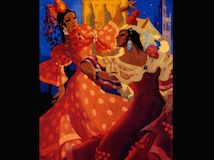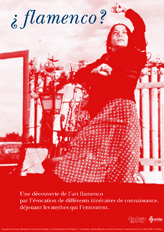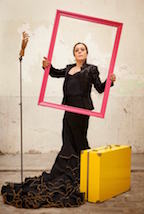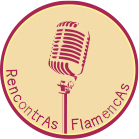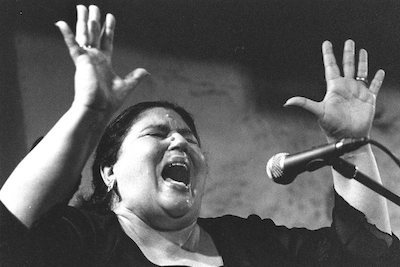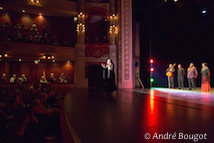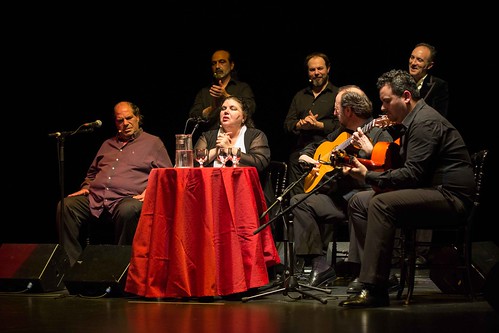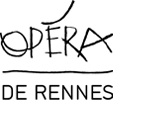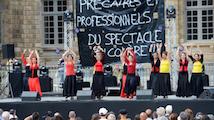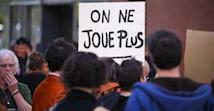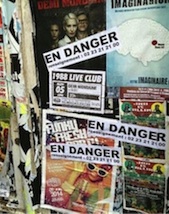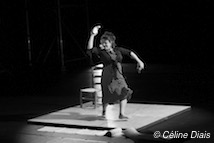
creation 2014 by Cécile Apsâra, dance for all public
Length : 30mn
The four cardinal flamenco dance points Cécile Apsara questions to heart the telluric force of the woman in sunlight, water and fire, between heaven and earth.
Experimental project, this piece explores the resonances between flamenco, theater and contemporary dance.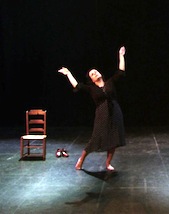
SOL : SUN plunges sources of living art and awakens the subterranean forces that connect to the universe. Energy unadorned hits the bowels and captures rooted in us emotions.
Carried by the ancestors, the dancer asks social dancing to finally rise to itself, in the movement of inner strength.
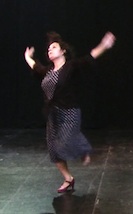
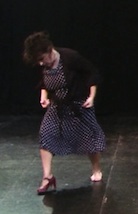
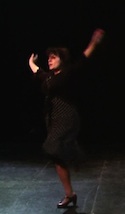
Choreography and performance: Cécile Apsâra
Mentorings : Christine BARBEDET / Maribe Demaille and Patrick Le Doaré, TEEM
Musical composition “partition”: Jean-Charles François
Original Music Voice: Alicia Acuña
Recorded Music: Sotiria Bellou
Light and sound: Ronan Bernard
Residencies: Cultural Office of the CC Mauron
Receptions studio: Triangle, dance city in Rennes and Collectif Danse Rennes Métrople
Recording Studio: L’Arène Musicale, Rennes
Production: APSÂRA Flamenco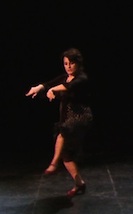
Judith Farro performance during the show
SOL Experiments
PHOTOS ALBUMS :
> Céline Diais
> Judith Farrö
Contact :
> to contact us
Cécile Apsâra, choreographer
mobile phone: +33 (0) 6 16 13 42 50
Proposals for cultural activities in the territories
Cultural activities in schools
Flamenco in family
The company is supported by Conseil Général 35 and the City of Rennes, support companionship TEEM (Territoires d’écritures en mouvement), receptions in residence at Office Culturel de la CC de Mauron, receptions studio at Collectif Danse Rennes Métrople and at Triangle, city of dance and enjoys the support of Brittany through the jobs associative device of regional interest.
Copyright © APSÂRA Flamenco, All rights reserved.




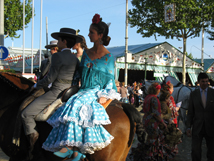
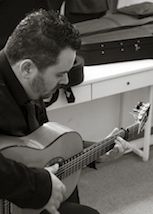
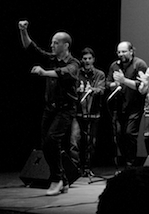
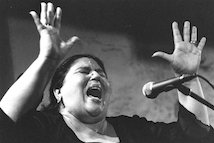 Inés Bacán est née en Andalousie dans une dynastie gitane flamenca de longue tradition, celle des Peña de Lebrija, ou Pinini, du surnom de l’ancêtre chanteur. Si elle a attendu de longues années avant de chanter, elle y a gagné un pouvoir : celui de se faire entendre avant même d’ouvrir la bouche. Tout en pudeur et en intériorité, elle scelle d’emblée un pacte silencieux avec le public, qu’elle invite à une traversée vers un autre temps, celui de l’intériorité. Sa lenteur particulière, sa voix forte mais retenue, rencontrent naturellement la profondeur des siguiriyas et des soleas, les chants graves du cante jondo. Sans apprêts ni surenchère, elle touche le spectateur au plus juste, lui envoyant une sincérité à vif, modulant les mots jusqu’au sanglot, improvisant avec expertise sur les structures de base, ou jouant avec les silences qu’elle connaît aussi intimement que la musique.
Inés Bacán est née en Andalousie dans une dynastie gitane flamenca de longue tradition, celle des Peña de Lebrija, ou Pinini, du surnom de l’ancêtre chanteur. Si elle a attendu de longues années avant de chanter, elle y a gagné un pouvoir : celui de se faire entendre avant même d’ouvrir la bouche. Tout en pudeur et en intériorité, elle scelle d’emblée un pacte silencieux avec le public, qu’elle invite à une traversée vers un autre temps, celui de l’intériorité. Sa lenteur particulière, sa voix forte mais retenue, rencontrent naturellement la profondeur des siguiriyas et des soleas, les chants graves du cante jondo. Sans apprêts ni surenchère, elle touche le spectateur au plus juste, lui envoyant une sincérité à vif, modulant les mots jusqu’au sanglot, improvisant avec expertise sur les structures de base, ou jouant avec les silences qu’elle connaît aussi intimement que la musique.